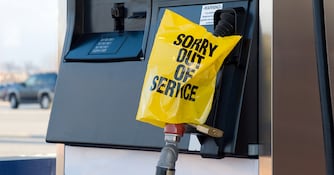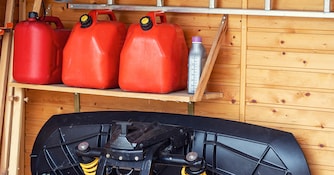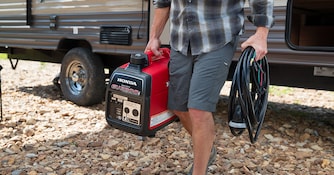
Generator Safety Tips: Carbon Monoxide
You know better than to throw water at an electrical outlet or to stick your hand inside a running lawnmower.
Use the same common sense when operating an electrical generator: never run it indoors. Doing so is irresponsible and life-threatening. In fact, the U.S. Consumer Products Safety Commission is now requiring manufacturers of portable generators to warn consumers of carbon monoxide hazards through a new label that reads, "Using a generator indoors CAN KILL YOU IN MINUTES."
Why Should You Never Run a Generator Indoors?
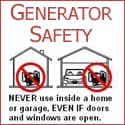 Generators emit exhaust containing carbon monoxide - the same stuff that kills people who leave their car running in the garage. After the snowstorm that ravaged Connecticut in November 2011, unintentional CO poisoning accounted for 18% of all storm-related deaths. That's nearly a fifth.
Generators emit exhaust containing carbon monoxide - the same stuff that kills people who leave their car running in the garage. After the snowstorm that ravaged Connecticut in November 2011, unintentional CO poisoning accounted for 18% of all storm-related deaths. That's nearly a fifth.
Carbon monoxide is a colorless and odorless gas. It's also a very deadly gas because most victims don't realize they are being poisoned until it's too late.
Generators are often used during rainstorms since that's usually when the power goes out. To keep the generator dry, some people place it in their garage or underneath the porch. Unfortunately, by doing so, they are inviting carbon monoxide to slowly seep into their home.
And, contrary to popular myth, keeping the garage door open does not provide enough ventilation to keep the fumes outside. The fact is, running a generator inside is unsafe even if doors and windows are wide open.
So, you might be wondering, "How can I run a generator outside in the rain?" I recommend a protective canopy, such as those sold by GenTent. The canopy will shelter your generator from the elements, allowing you to safely run it outside without risking water or wind damage.
Where to Run Your Generator
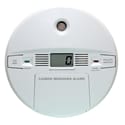 The most obvious solution is to run the generator as far away from your house as possible (at least 10 feet) and point the exhaust away from open doors and windows.
The most obvious solution is to run the generator as far away from your house as possible (at least 10 feet) and point the exhaust away from open doors and windows.
You should also purchase a carbon monoxide (CO) detector. Since your power will be going on and off, get one with a plug and battery backup. That way, if you shut off the generator, the battery backup will automatically keep the device going.
If you think you're smarter than the safety experts and have developed some slipshod ventilation system for your generator, I advise against it. Something could easily go wrong, causing you to lose everything. It's not worth the risk.
I'm not trying to run your life. I'm begging you to be responsible and not put yourself or your family at risk! We all have moments when we think we have things all figured out, and that's when the unexpected happens.
Don't let the unexpected happen. Leave your generator outside.



